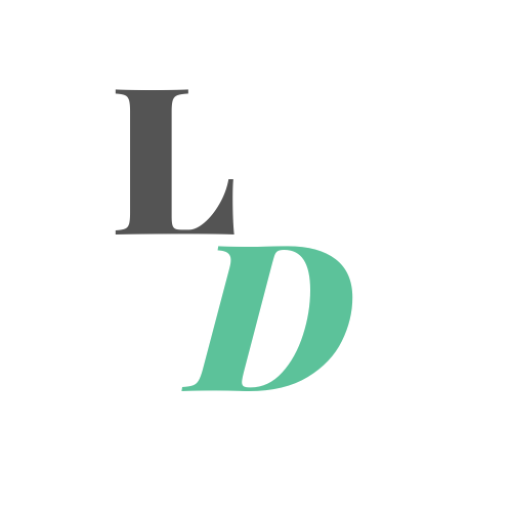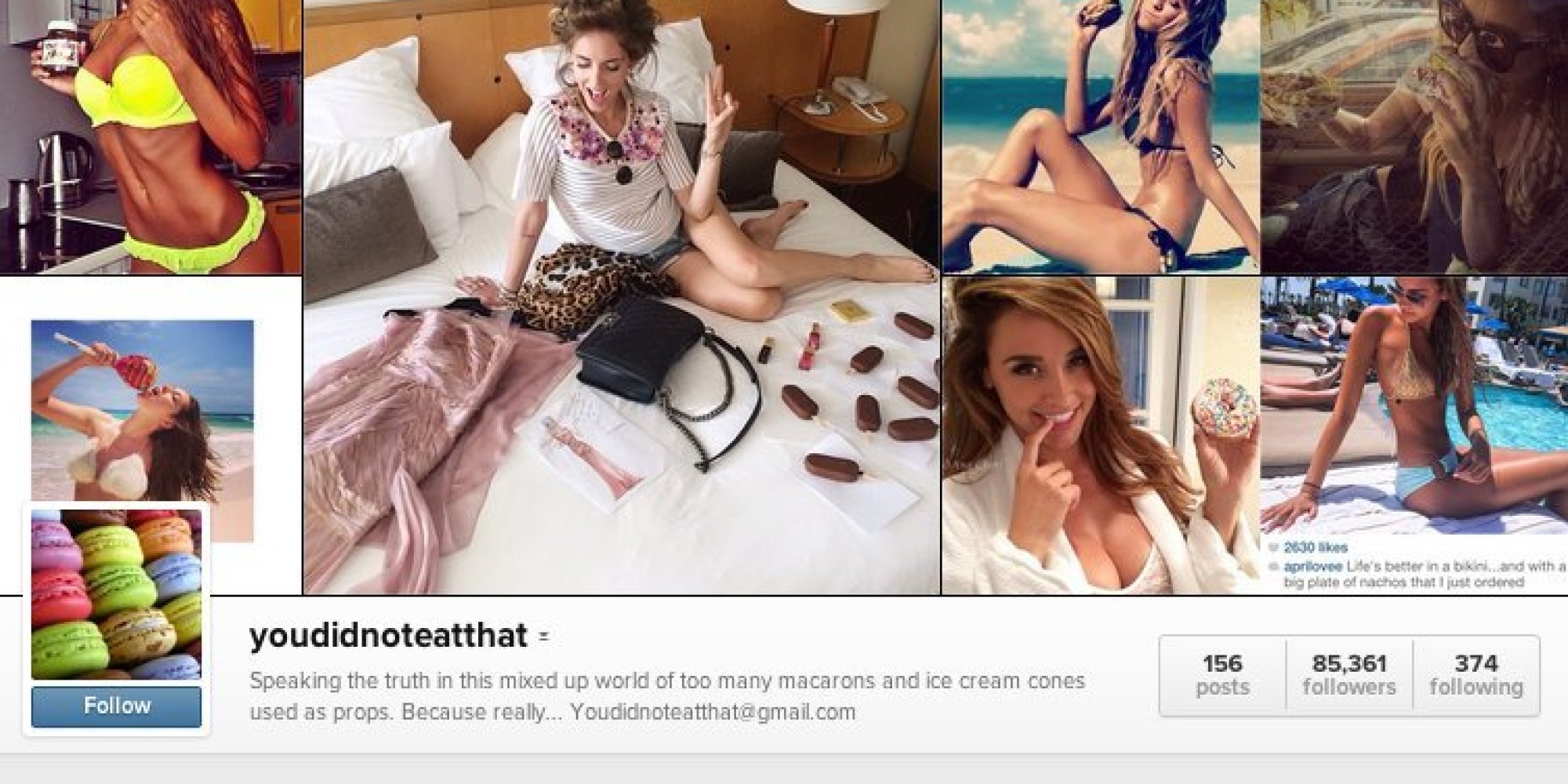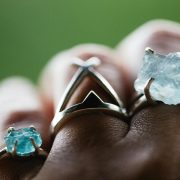Like all the best conversations, it started with some idle road trip chat; my husband and I were on the long road to Pittsburgh and were discussing the importance of curating an armory of Nerf guns for our future children, amongst other things. Eventually, all this somehow led into a very Deep And Meaningful Discussion about feminism, food and the fashion industry. This article is a more articulate version of that conversation. Hopefully.
It’s no secret that the fashion industry is obsessed with food. Open an issue of Vogue, read a blog, scroll down Instagram, and it’s right there in front of you. Food. Look at these adorable macarons. Look at this juicy lump of steak. Cream topped gourmet milkshakes, casual acai bowls, mimosas at brunch. Sometimes it’s achingly beautiful plates of Michelin-star delicacies, and sometimes it’s as simple as plain old fast-food grub. Food has become a mainstay in fashion imagery, and it’s written into the unspoken small print of the blogging community that Thou Shalt Instagram Thy Plate.
In many ways, this reflects the evolution of fashion blogs: It’s no longer “good enough” to limit oneself to exclusively discussing fashion. Bloggers are expected to present a complete package—a fashionable lifestyle—to their readers. Beautiful wardrobes must be paired with beautiful bodies, beautiful homes, and beautiful plates. Who cares that you wear pretty clothes, that you found that designer boucle-knit sweater in a thrift store, or if you’re attending your tenth show at NY Fashion Week? If you’re going to be a convincing style writer, you have to present a perfectly orchestrated lifestyle, filled with dainty pastries at brunch with your equally perfect girlfriends, and nonchalant selfies with hand-crafted latte art. You have to postulate that you lead an impeccably coordinated, fashionable existence.
The thing is, the resulting images that readers/consumers ingest are unsavory at best.
I recall the kerfuffle over the @youdidnoteatthat Instagram account last year: the accusations of “food shaming”, “skinny shaming”, and so on. By no means could I suggest that this backlash is entirely unfounded. But I’m not here to make this same, tired argument. There are, of course, many millions of women on this earth who are naturally very slim, and many of these women also probably enjoy good food. Oh damn, that may not be the case for all of us, but that’s science. Time to pull up your big girl pants and GTF-over it. Disclaimer: It’s not about shaming individuals. But as soon as someone cries wolf with the “S” word, all hell breaks loose and we can’t sit down and have a real discussion about why combining fashion imagery with food is, ultimately, really confusing.
The problem is not with one blogger, one writer, one woman. It’s a problem with the imagery that is created, the cumulative effect of that imagery, and the problems that women experience as a result.
 It’s an unarguable fact that fashion thrives on idealism. It just so happens that the ideal body type in the fashion world is a very slender one. It’s hard enough for women who have a *normal* metabolism to be simultaneously exposed to images of unattainably thin women, to then also have the contrary image of the same waif-like women eating indulgent foods. The hard fact is, whatever your personal struggle with your body (and body image) is like, we were not all bestowed a gift from a fairy godmother wherein our feet will never grow larger than our tiny glass slippers, and our waists will never expand past 23 inches. Sadly, life doesn’t work that way.
It’s an unarguable fact that fashion thrives on idealism. It just so happens that the ideal body type in the fashion world is a very slender one. It’s hard enough for women who have a *normal* metabolism to be simultaneously exposed to images of unattainably thin women, to then also have the contrary image of the same waif-like women eating indulgent foods. The hard fact is, whatever your personal struggle with your body (and body image) is like, we were not all bestowed a gift from a fairy godmother wherein our feet will never grow larger than our tiny glass slippers, and our waists will never expand past 23 inches. Sadly, life doesn’t work that way.
But, within the realm of images that we lust after every day on Instagram, Pinterest and the like, that’s how life should be. It’s also worth noting that larger women don’t have the privilege of being photographed with food without a very different connotation being communicated by the image. Thin women are granted immunity, permitted to use food as a prop, because they sit higher up the pyramid of desirability. Ergo, it leads to a great unhappiness when we realize that the cumulative effect of such images does, in fact, damage our self-esteem.
Mind-blowing stuff, I know. But really, it’s a problem. To be mocked with images of decadent food in adverts, blog posts and magazine spreads where beautiful clothing should be the focus is, quite simply, unnecessary. It serves no purpose, other than to make the world of high fashion even more aloof and unattainable. And, ultimately, the imagery itself is alarmingly hypocritical.
“You Did Not Eat That” springs to mind here, naturally. It’s a gallery of images where this hypocrisy is most apparent. Whatever your opinion of “You Did Not Eat That” might be, it’s unarguable that there is an element of satire that mandates its existence, and that in itself is the important message that this controversial Instagram account communicates.
Let’s go Basic Satire 101 for a second: Satire is the use of “humor, irony, exaggeration, or ridicule to expose and criticize people’s stupidity or vices, particularly in the context of contemporary politics and other topical issues” (thanks be to Google for always being a homeboy). The creator of “You Did Not Eat That”, in an interview for NY Mag, speaks about how absurd the blogging community has become, and how she witnessed several bloggers staging images with decadent foods for the sake of a pretty picture, rather than out of genuine excitement for some taste bud titillation. The account was born out of a desire to expose the “silly, formulaic” culture that social media-driven self-PR has created. So no, “You Did Not Eat That” is not about directly shaming women for their eating habits; it’s about lifting the lid on the superficial, image-propelled cyber community in which we immerse ourselves on a daily basis. The joke’s on us: We’ve been blindly led to believe that it’s perfectly normal to cultivate the most well-polished, Sunday-best image of ourselves to project unto others. “You Did Not Eat That” ridicules this cultural phenomenon.
 Furthermore, the real beauty of this controversial Instagram account is that “You Didn’t Eat That” exposes the intrinsic hypocrisy in the fashion world. There is, and has always been, a metaphorical elephant in the room where the fashion industry is concerned, and “You Didn’t Eat That” drags it out into the light of day. It cuts to the very core of fashion’s twisted, hypocritical ideology: We, as consumers, are simultaneously fed a juxtaposition of excessive indulgence versus obsessive restraint. We’re led to believe that below-average BMIs and high-calorie foods are perfectly compatible. The images are a visual amalgamation of decadence and gluttony in the midst of an industry that, ultimately, prizes thinness above all else.
Furthermore, the real beauty of this controversial Instagram account is that “You Didn’t Eat That” exposes the intrinsic hypocrisy in the fashion world. There is, and has always been, a metaphorical elephant in the room where the fashion industry is concerned, and “You Didn’t Eat That” drags it out into the light of day. It cuts to the very core of fashion’s twisted, hypocritical ideology: We, as consumers, are simultaneously fed a juxtaposition of excessive indulgence versus obsessive restraint. We’re led to believe that below-average BMIs and high-calorie foods are perfectly compatible. The images are a visual amalgamation of decadence and gluttony in the midst of an industry that, ultimately, prizes thinness above all else.
“You Did Not Eat That” may have been “slammed” by body image experts, but it seems to have slipped past people that criticizing the big guns of the fashion industry is not the same as, for example, “shaming” women who eat on public transport. The images on YDNET are, for the most part, images that have been set up by celebrities, fashion magazines and highly profitable blogs. These are people and companies in positions of relative power; they are Pied Piper which the masses blindly follow. Pitching two ultimately opposing themes in their images sends a hypocritical message to consumers. The contradiction embedded in this imagery is a reflection of our haphazard relationship with food, fashion, and our own self-perception.
Or, as my “dumb huzbind” would say, “Why are girls supposed to eat like dudes and weigh half as much?” … He does have a point. Such images pay homage to the fashion’s contradictory approach to consumption. It doesn’t matter if she ate it or not. The image itself is absurd.
Naturally, at such a powerful level, it’s not unreasonable to posit that there ought to be an element of responsibility among these groups. There are many deep-rooted issues that run rife among elements of the media, and have very real effects on millions of people. In this instance, it’s clear that the oxymoronic imagery of adding indulgent food to fashion shots is a shady reflection of the mixed messages perpetuating our image-driven society. While fashion houses, publications and big-time bloggers ought to shift away from such a trend, on an individual basis, the best we can do is to ridicule the Boggart.
I agree that it’s cruel to “shame” the woman who is happily picking at a glorious basket of animal fries, or the model who appears to be tucking into a tablet of cheap chocolate. The problem is deeper than trolling individuals. What it boils down to is that the fashion industry has become a cultural Thought Police for consumers, and that juxtaposing images of burgers, cakes and shakes with fashion’s most coveted accessory—a minute frame—should not sit well with us. “Skinny shaming” isn’t the issue at hand; it’s a fault in our superficial, “anything-for-a-photo” culture, and a visual manifestation of fashion’s bemusing double standards. Whether you see food as fuel, or as an enjoyable pasttime, we can surely agree that food is not a prop for a photoshoot, nor should it ever be. We, as responsible consumers, simply need to learn to scrutinize the images we digest.
* See what I did there? Follow us, people!
Share this:
- Click to share on Tumblr (Opens in new window)
- Click to share on Twitter (Opens in new window)
- Click to share on Facebook (Opens in new window)
- Click to share on Reddit (Opens in new window)
- Click to email a link to a friend (Opens in new window)
- Click to print (Opens in new window)
- Click to share on Pocket (Opens in new window)
- Click to share on LinkedIn (Opens in new window)
- Click to share on Pinterest (Opens in new window)










